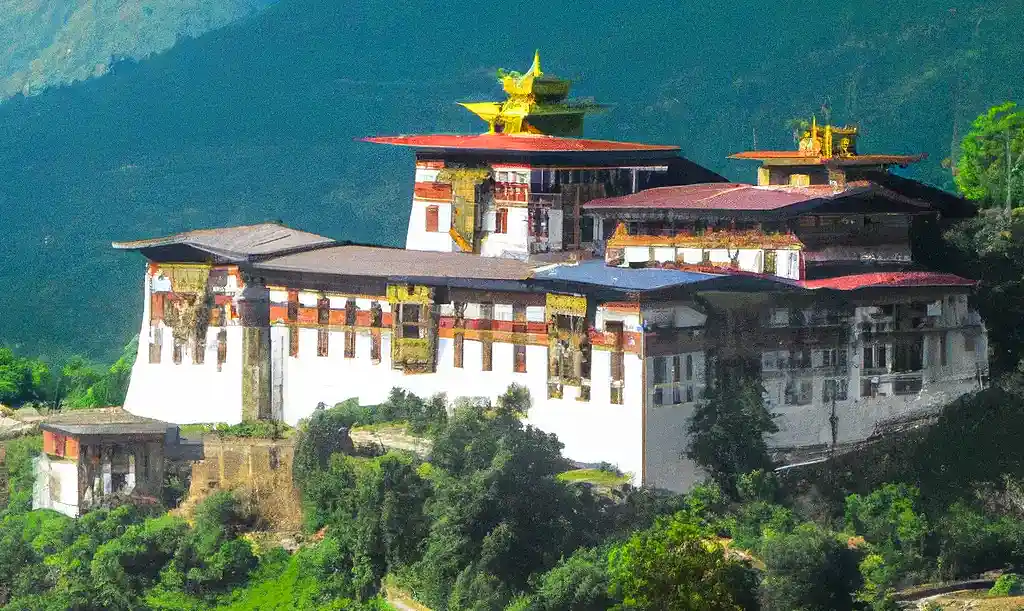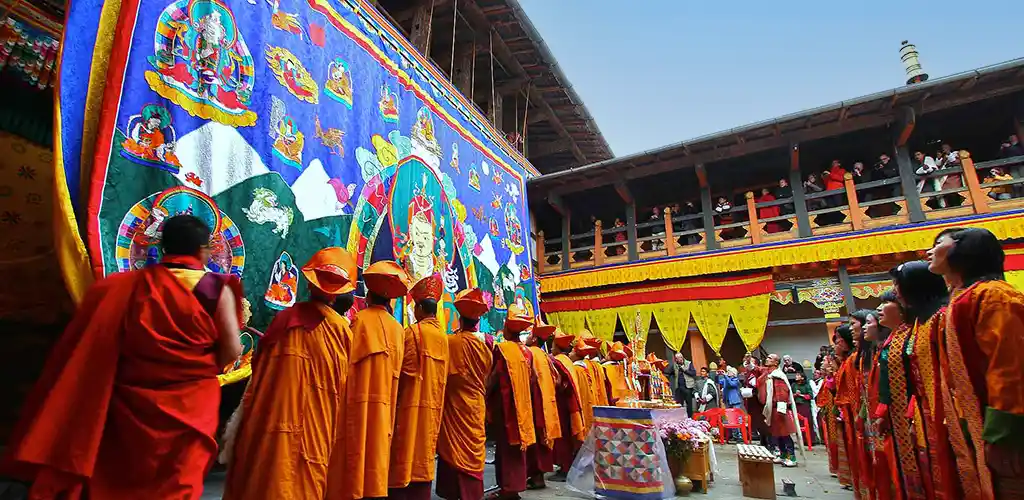Jakar Tshechu (Festival)
A relatively new festival, and also more remote to travel to, the five-day long annual Jakar Tshechu is held every October to November taking place at the magnificent Jakar Dzong ("Castle of the White Bird") perched high on a hill overlooking the breadth of Bumthang’s Chamkhar valley. The setting is reason enough to make the trek here.
Constructed in 1549, by the Tibetan Lam Nagi Wangchuk, the Dzong played an important role as the fortress of defense for the whole eastern Dzongkhags (districts). A special feature of the Dzong is the approximately fifty meters high Utse or the Central tower, which is distinct from most other Dzongs in Bhutan. Apparently, when a group of lamas were in the area searching for a suitable site for the new dzong, a single white bird continuously circled overhead before settling on the top of a hill. This was considered a good omen, and the hill was selected as the site for the dzong and White Bird was adopted as its name.

During festival several mask and folk songs and dances are performed while the jesters, called atsaras, keep the crowd thoroughly entertained. Some of the important mask dances (chams), performed at Jakar Dzong are Guru Tshengye Cham, Dramtse Nga Cham, Raksha Mangcham, with the Guru Thongdroel consecrated on the final day of the Tshechu for the public veneration.
Like other festivals, Jakar Tshechu is also a magical spectacle in which the spiritual richness of the country is displayed through unique Bhutanese tradition of devotion, faith,respect and togetherness. Tshechu is also the event when people of all age groups in their finest clothing and jewelery capture not only the beauty and vigor of the dances but also interactions among performers and the lay audience, moments behind the scenes in the dressing room, and the omnipresent antics of the artsaras or clowns—assistants, entertainers, fertility figures, who instruct through play and jest.
The dance program includes the Black Hat Drum Dance, the Dance of the Terrifying Deities, the Wrathful War Dance, the Dance of the Stag and Hounds, and the Dance of the Lords of the Cremation Grounds, Jakar tshechu, Guru Tshengye, and the dance of the eight manifestations of Guru Rinpoche
Dance by the eight manifestations of Guru-Rinpoche
Dance are all elaborately choreographed allegorical representations of the forces of Buddhist doctrine, often taking wrathful and terrifying form in order to subdue the powerful negative forces that seek to obstruct or subvert spiritual truths and the pursuit of virtue. The long and dramatic Dance of the Judgment of the Dead, based on the Book of the Dead, is situated in the bardo or state between death and rebirth, and enacts judgments passed by the Lord of Death upon a hunter who has lived a sinful life and a householder who has followed a life of virtue. Thus, the whole festival is designed as an entertainment that uses all the resources of dance, costume, music, drama and comedy to vividly inculcate religious doctrine and provide spiritual guidance to its audience.
A highlight of the festival is the ceremonial unveiling of the colorful tangka on the last day, a sacred tatpestry only brought out once a year for the hundreds of attendees to view.
Season: October - November
Location: Jakar Dzong, Choekhor valley, Bumthang


